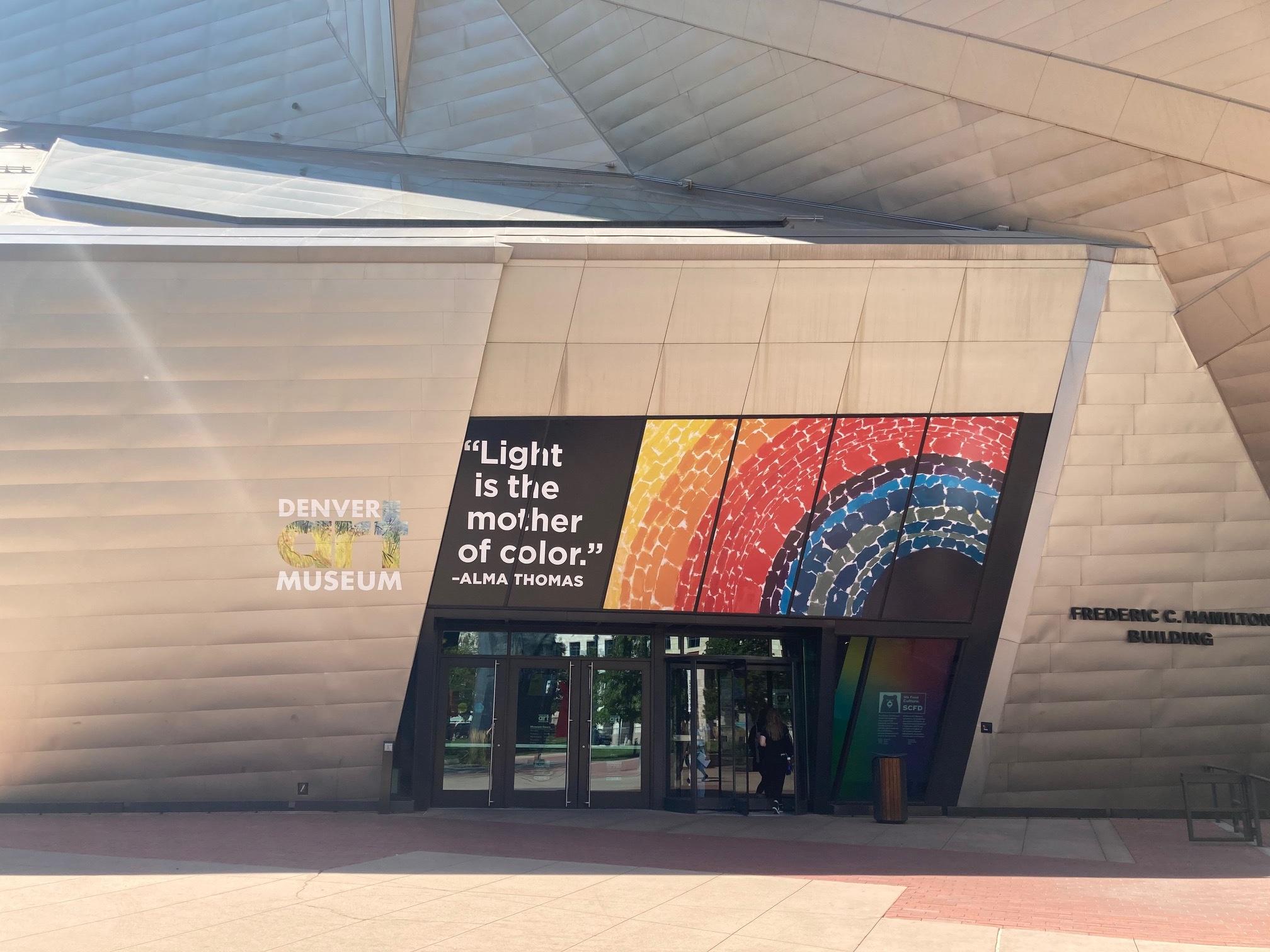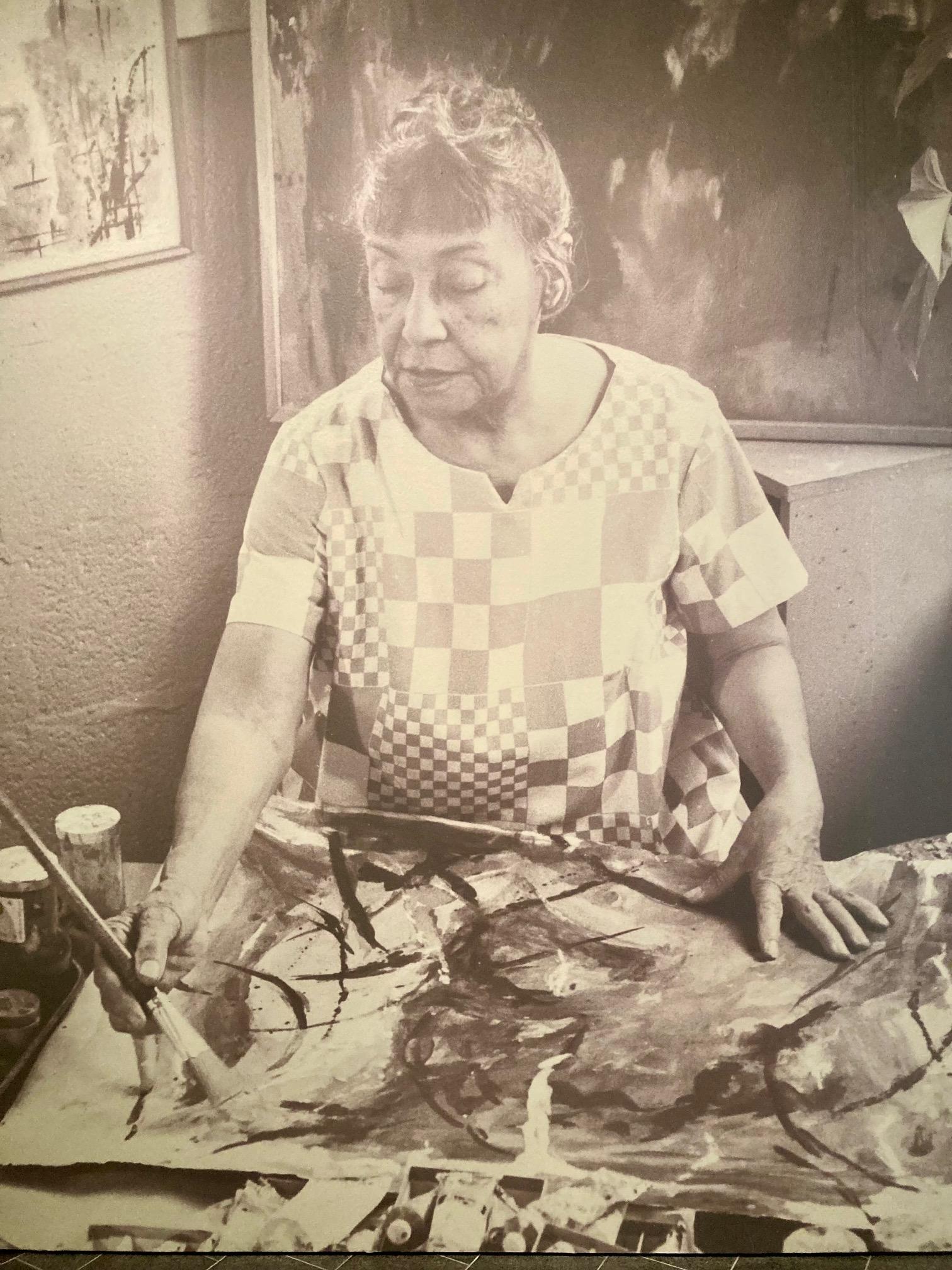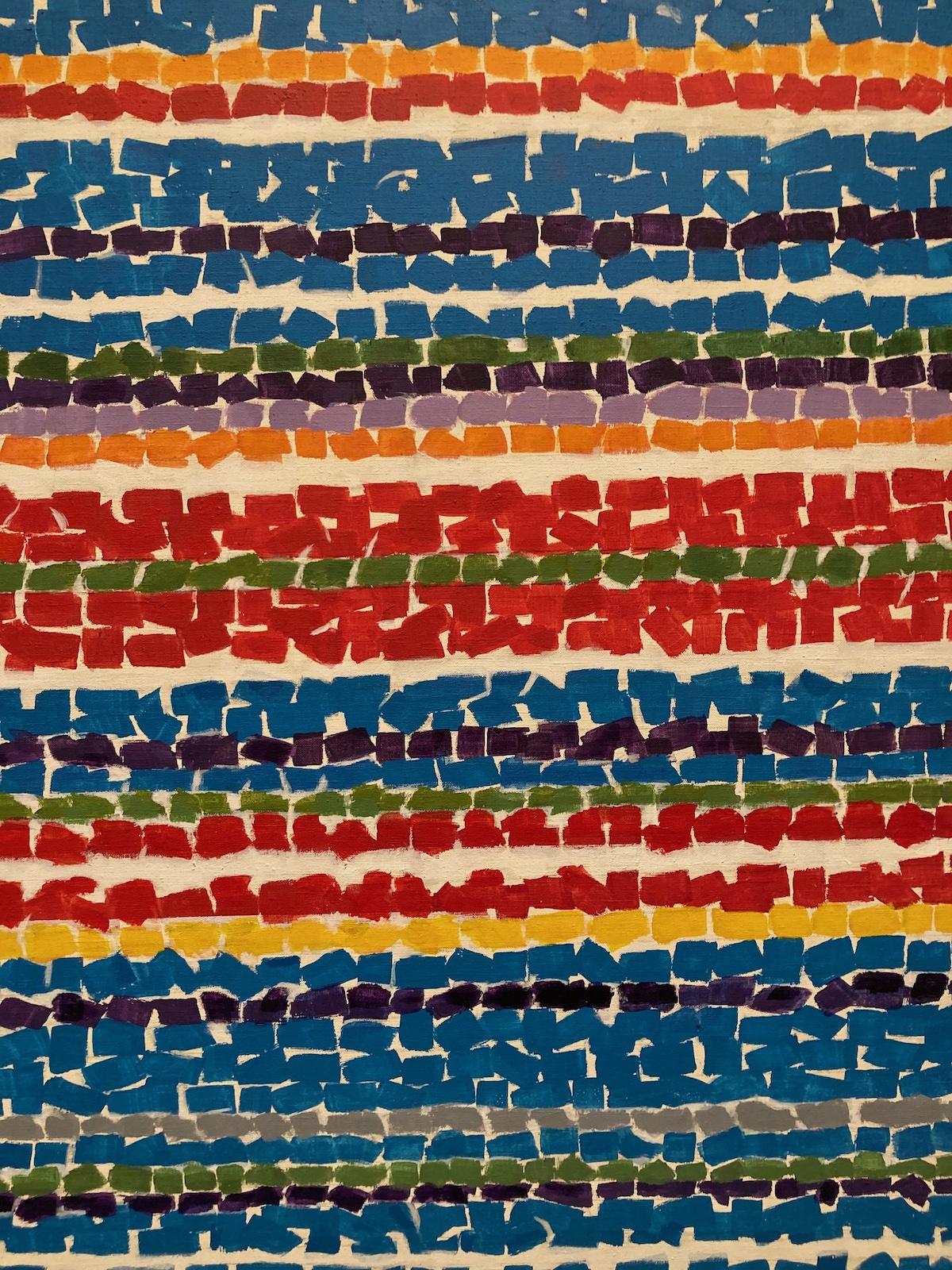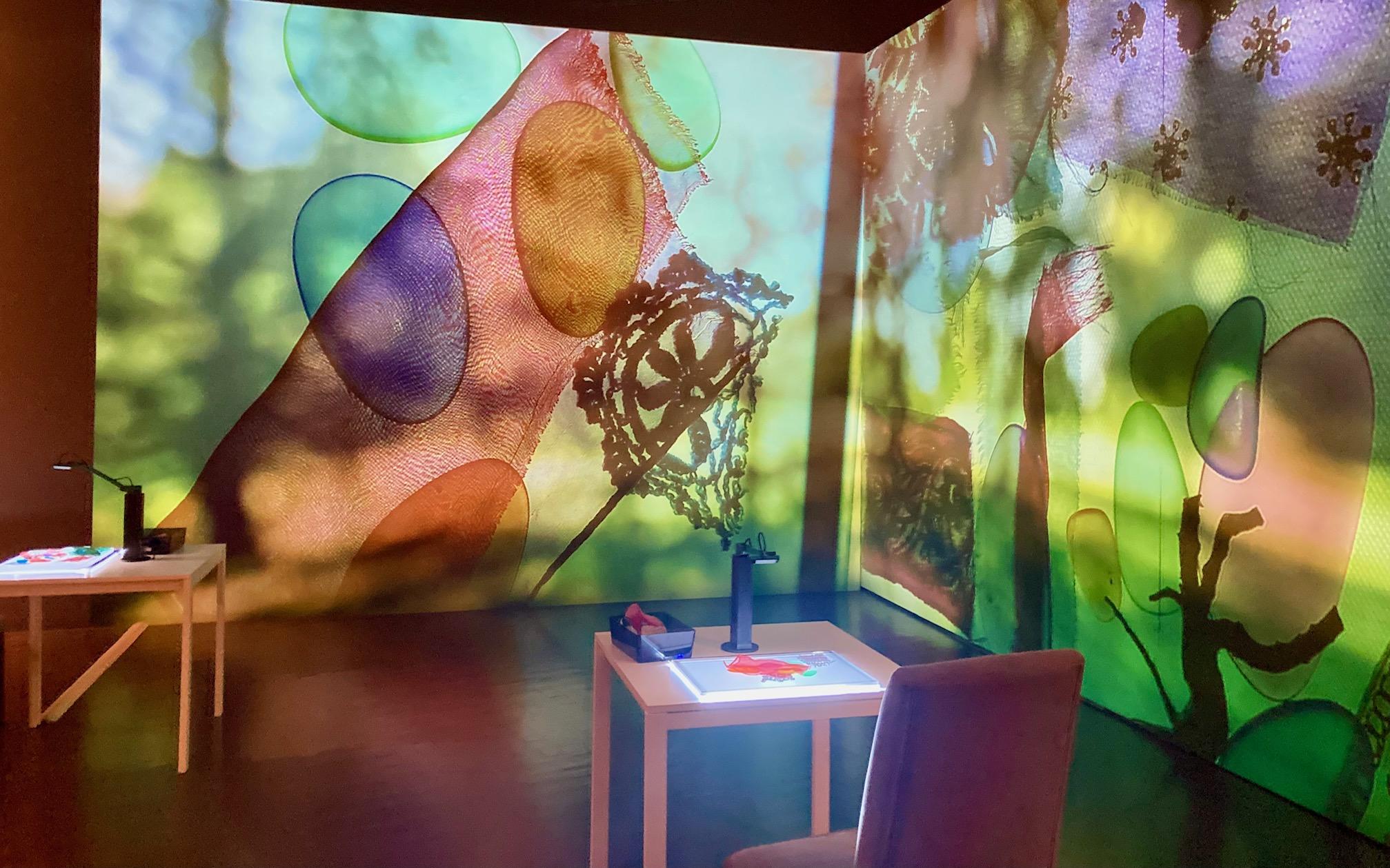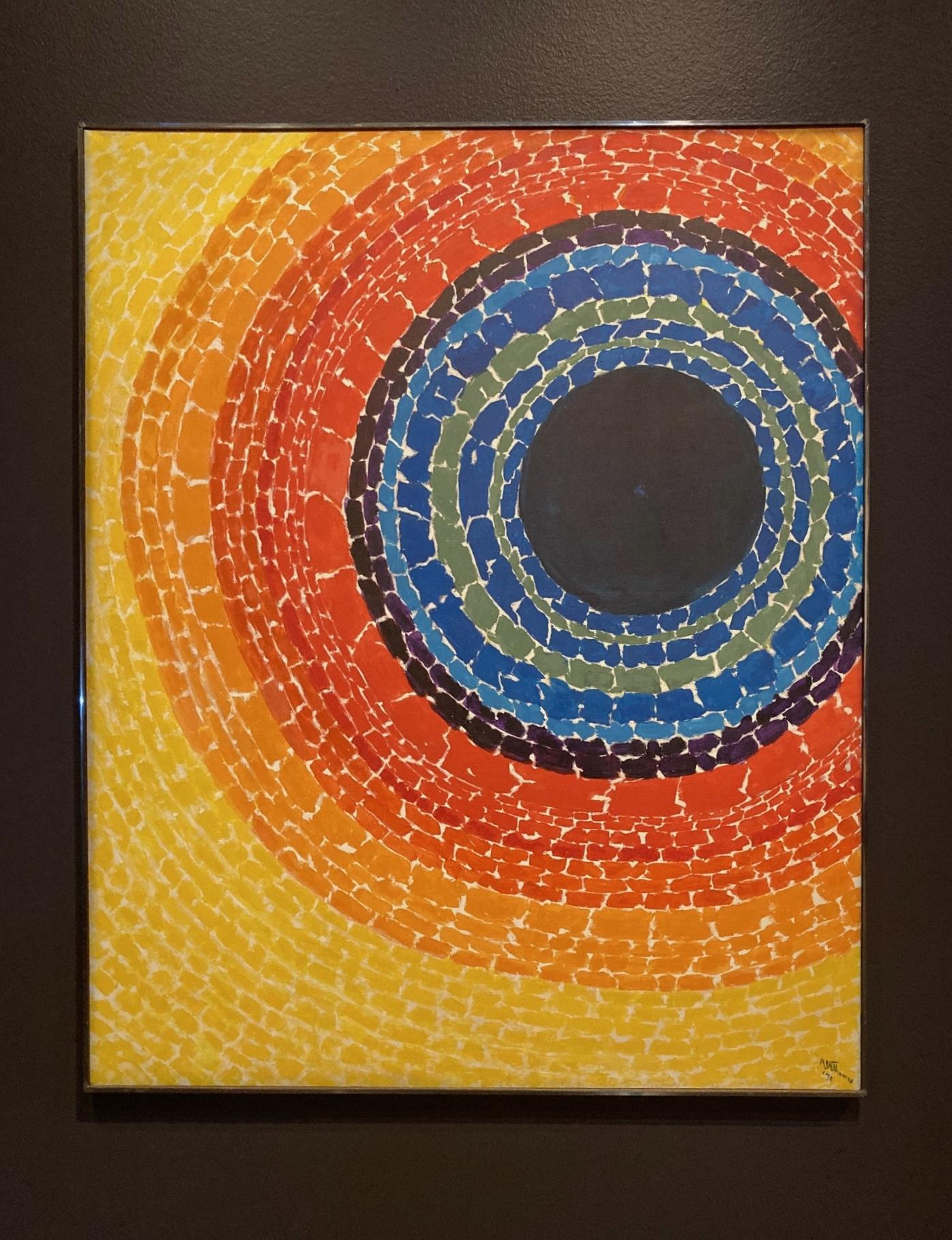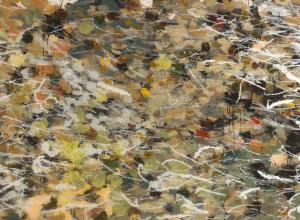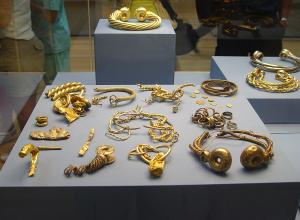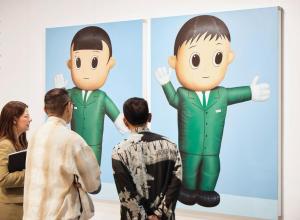“Her studio was in her kitchen,” said the DAM’s Vicki and Kent Logan Curator of Modern and Contemporary Art, Rory Padeken. He oversaw the installation of the Thomas show. Melissa Ho, curator of 20th-century art at SAAM since 2016, curated the exhibit.
“We are extremely fortunate and privileged at SAAM to have the most extensive collection of Thomas’ paintings anywhere, and those deep holdings reflect the significant relationship that Thomas had with this institution and the people who worked here,” said Ho.
One of the paintings on exhibit at the DAM, “Light Blue Nursery,” was donated to SAAM in 1970 by Alma Thomas.
“This was the first work by her to enter the collection,” said Ho. “It hung for some time in the office of the director, Joshua Taylor. Nine other paintings were either purchased or donated by other people during the artist's lifetime. Then, in the final year of her life, Thomas made arrangements to leave the bulk of her own collection to the museum after her death.”




